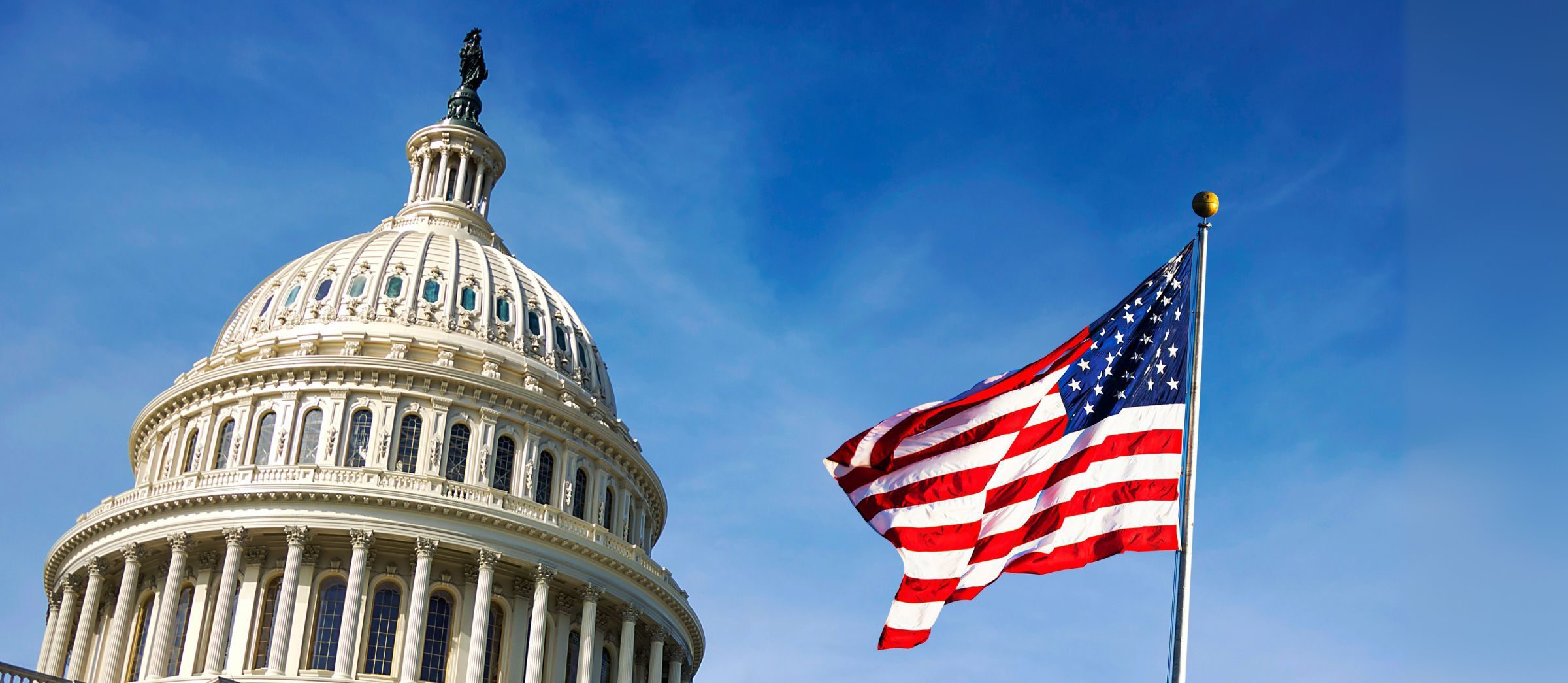Trump’s second term: six months in and the road ahead

As of 20 July, President Trump completed the first six months of his second term. Political risks remain low, but the trend is deteriorating.
Trump entered office after a tense transition period. Allies had reportedly prepared over 100 lawsuits in battleground states, and public demonstrations were at their highest since 2020. Yet no major crisis erupted, demonstrating the resilience of US electoral institutions.
Major actions and policies
Trump’s early months were defined by intense executive activity, with a focus on austerity, immigration, and trade.
His administration moved quickly to reduce bureaucracy, creating the Department of Government Efficiency (DOGE) under Elon Musk and freezing budgets for USAID and DEI initiatives - moves criticised by the international community and civil society groups. Many orders lacked clear implementation plans, reflecting a priority on political wins over practical outcomes.
On immigration, Trump declared a national emergency at the southern border with Mexico, deploying the Army and National Guard and reducing border encounters to record lows. High-profile ICE raids and deportation efforts sparked violent protests, while attempts to end birthright citizenship were immediately challenged in court.
Trade and economic policy emphasised tariffs to bring manufacturing back to the US and offset tax cuts under the One Big Beautiful Bill Act (OBBBA). A 10% blanket tariff on “Liberation Day” along with country-specific tariffs resumed in August, stirred divisions between radical and moderate Republicans, revealing underlying cohesion risks.
Domestic consequences
Internal Republican tensions have increased as moderates clash with MAGA loyalists. Although Republican control over the Senate and House of Representatives has prevented political gridlock, American involvement in the Middle East and Ukraine, government spending, Epstein’s investigations and tariffs are creating division within the party.
High-profile decisions - from immigration raids to trade tariffs and military deployments - have fuelled civil unrest, with tens of thousands attending mostly peaceful national protests each month.
The administration’s willingness to deploy troops without state approval, as seen in California, highlights a readiness to challenge established norms if they conflict with presidential objectives. Trump’s decision to deploy the National Guard in Washington DC as of early August, underscores he is willing to double down on highly contentious policies despite the prospect of public agitation.
Budget cuts and loyalty-driven appointments have strained public services. Reductions to SNAP and Medicaid under OBBBA are projected to leave nearly 12 million Americans without health insurance by 2034, while withholding career bureaucrats from key roles raises questions about the expertise guiding government decisions.
Foreign policy and international impact
Trump’s administration pursued several ambitious foreign policy moves. Efforts to broker a Ukraine-Russia peace agreement have seen limited progress. Perceived disengagement from NATO and European affairs has raised concerns among allies. Meanwhile, the administration seeks to expand the Abraham Accords, reduce its operations across the Middle East, and explore territorial ambitions in Greenland - a marked departure from prior administrations.
At the same time, airstrikes against Iran’s nuclear program showed the US is willing to act militarily in the Middle East when deemed necessary for its national security. Efforts in the Americas aim to limit Chinese influence, but USAID budget cuts threaten US influence and create space for rivals. Human rights and democracy promotion have taken a backseat, as illustrated by limited criticism of autocratic trends
Volatility as the defining risk
The coming months of Trump’s second term are likely to be shaped by the same combination of speed, unpredictability and political confrontation that has marked his first six months. While immediate political risk remains low, the way policies are made - and unmade - will test the ability of businesses, allies and domestic institutions to adapt. We forecast:
- Expedited policymaking: Trump is expected to continue announcing and promoting policies through social media. He is likely to continue using executive orders to fast-track legislation, which in turn will lead to criticism due to the lack of checks and balances from the legislative branch.
- Uncertainty is the new certainty: The erratic nature of many policies, underscored by Trump’s flip-flopping over tariffs, is likely to generate uncertainty among domestic and foreign decision-makers. Long-term strategies will be harder to implement.
- Diplomatic pressure: Although territorial expansion using military force remains highly unlikely, Trump is expected to use economic and political coercion to achieve his foreign affairs goals. Diplomatic crises with Colombia, Venezuela and Brazil are likely to be the first of many.
- Use of the Armed Forces: The “border crisis” and the deployment of the National Guard in several cities, most notably Washington DC and Los Angeles, indicate that Trump is likely to expand the use of the military beyond the traditional roles.
- Visa restrictions: The list of countries with visa limits, restrictions and prohibition is highly likely to increase. Authorities are almost certain to increase scrutiny at the ports of entry and visa applications. Threats of visa restrictions will likely be a key strategy to obtain leverage for deals.
- System of alliances: Trump wants to be remembered as a peacemaker and will attempt to secure ceasefires and peace deals, even if these require the US to rethink its traditional alliances. Such volatile conditions are unlikely to create conditions for lasting peace.
The road ahead
The pace and unpredictability of policymaking are shifting the ground beneath businesses, allies and communities. The defining risk is not immediate upheaval, but a policy environment where reversals, exceptions and confrontations can emerge with little warning.
For organisations, this means preparing for volatility - in regulations, trade rules, visa policy and security posture - while recognising that domestic divisions and strained alliances will shape the next stage of Trump’s second term. The question is less about whether change will come, and more about how quickly, and in what form, it will arrive.


